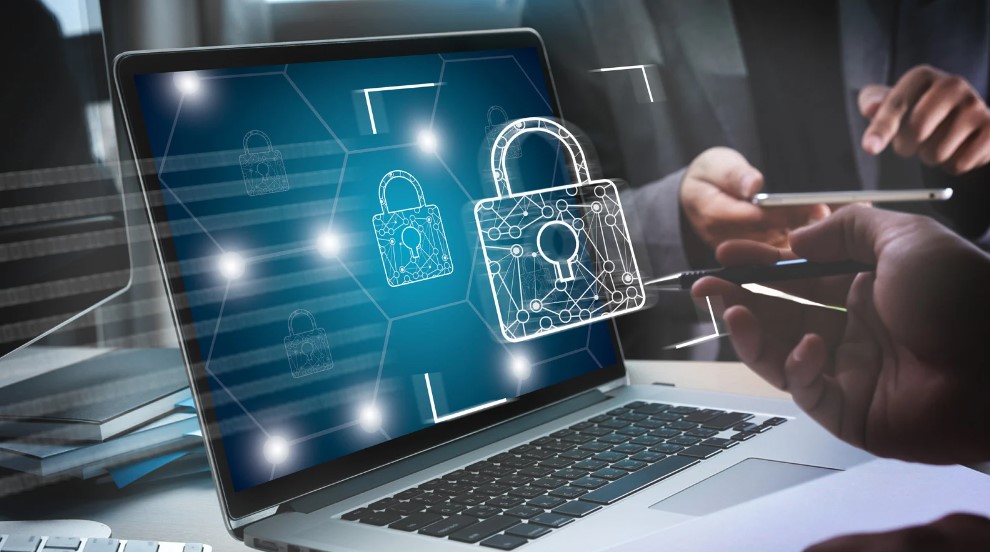Table of Contents
Keeping your business environment safe and secure should be a top priority. But, how exactly can this be done? There are various options from training employees and upgrading physical security to strengthening cybersecurity and more.
In this blog, we’ll explore the different methods that can be implemented to tighten security in your workplace to ensure your employees feel confident and safe.
We’ll also explore the positives and negatives of each of these methods to help you make a more informed decision.
How to Improve Security in Business? – Steps to Follow
Conduct a Security Audit

A security audit helps you identify vulnerabilities in both your physical and digital security systems, giving you a clear picture of what needs improvement.
- Positives: This provides you with a complete overview of weak spots, enabling you to make informed decisions. It’s a crucial first step to tightening your security.
- Negatives: Audits can be time-consuming and may require professional help, which can be an additional expense. Uncovering issues can also lead to unexpected costs in fixing them.
Upgrade Physical Security
Upgrading physical security could involve installing better locks, security cameras, or access control systems like key cards or biometric readers.
- Positives: A visible upgrade in security, such as cameras or alarms, can deter criminals. These improvements can provide peace of mind and, in some cases, lower insurance premiums.
- Negatives: These systems can be expensive to install and maintain. If they aren’t properly monitored or maintained, their effectiveness diminishes over time.
Train Your Employees
Training employees on security protocols, such as recognising phishing emails, using strong passwords, and protecting sensitive data, is a key factor in preventing breaches.
- Positives: Employee awareness significantly reduces the risk of human error, which is often the weakest link in security. It also promotes a culture of security within the company.
- Negatives: Regular training takes time and resources, which could impact productivity in the short term. If not regularly updated, training can become outdated as threats evolve.
Strengthen Cybersecurity

Strengthening cybersecurity through strong passwords, multi-factor authentication (MFA), firewalls, and regular software updates is vital in preventing digital threats.
- Positives: Cybersecurity measures are essential for protecting sensitive data from hacks, malware, or phishing attacks. A strong system increases trust from clients and partners.
- Negatives: Implementing and maintaining cybersecurity can be costly, especially for small businesses. It can also make certain tasks more time-consuming, such as the added steps with MFA.
Back-Up Your Data
Regularly backing up your data—whether on the cloud or an external drive—ensures that you have a copy in case of cyber attacks, data loss, or equipment failure.
- Positives: Backing up data provides peace of mind, as it reduces the risk of losing important information. It ensures continuity in the case of an emergency.
- Negatives: Setting up and maintaining backups can take time and additional resources. Cloud storage can also be costly, depending on the amount of data your business generates.
Limit Access to Sensitive Information
Implementing access control systems that limit who can view sensitive information ensures that only authorised personnel handle important data.
- Positives: By restricting access, you reduce the risk of insider threats or accidental data exposure. It provides an additional layer of security around key information.
- Negatives: This approach may create bottlenecks in workflow, as employees might have to request access to certain information. It can also cause frustration if access is too limited or slow.
Implement a Visitor Management System
A visitor management system requires visitors to check in and out and often includes identity card checks and limited or escorted access to sensitive areas.
- Positives: This system helps keep track of who is on your premises, increasing accountability and limiting unauthorised access. It improves the overall security of your workspace.
- Negatives: The process can be time-consuming for both staff and visitors, especially during busy periods. Additionally, installing a robust system might come with considerable costs.
Invest in Secure Communication Tools
Using secure communication tools with end-to-end encryption ensures that sensitive business information isn’t intercepted by cybercriminals.
- Positives: These tools protect your data from unauthorised access during communication, ensuring that confidential information remains secure. It helps build trust with clients who value privacy.
- Negatives: Secure tools may be more expensive or complicated to set up and use. It can also be difficult to persuade employees to adopt new systems if they are used to more familiar (but less secure) methods.
Monitor Security Systems Regularly

Regularly checking and maintaining security systems such as cameras, alarms, and digital protection ensures they function properly.
- Positives: Proactive monitoring can catch small issues before they become larger problems, keeping security systems fully operational and ensuring consistent protection.
- Negatives: Regular monitoring requires time, effort, and sometimes external help. It can be easy to let monitoring slip in busy periods, which undermines the effectiveness of your security systems.
Create a Crisis Response Plan
A well-prepared crisis response plan outlines what to do in case of a security breach, cyber attack, or physical incident, assigning roles and responsibilities to employees.
- Positives: Having a plan in place minimises chaos in a crisis, ensuring a fast and organised response. It reduces the potential damage to your business, both financially and reputationally.
- Negatives: Developing and testing a response plan requires time and resources, which can be seen as a drain on the business until a crisis occurs. If not tested regularly, the plan might not work as expected when needed.
Final Thoughts
Improving security in your business comes with both benefits and challenges which are essential to understand when deciding which approach will be best suited to your business.
While these measures can protect your business from significant losses or threats, they often come with financial and operational costs.
Weighing the pros and cons of each approach is important when developing a security plan to make sure it’s both effective and sustainable.
Having a safe and secure workplace will help your business grow as it will allow your staff to flourish in their work environment without having to worry about their safety.
Author Profile

- Blogger by Passion | Contributor to many Business Blogs in the United Kingdom | Fascinated to Write Blogs in Business & Startup Niches |
Latest entries
 BusinessDecember 12, 2025The Smart SME’s Guide to Future-Proofing Physical Assets
BusinessDecember 12, 2025The Smart SME’s Guide to Future-Proofing Physical Assets FinanceOctober 28, 2025How to Measure the ROI of Your Promotional Product Campaigns?
FinanceOctober 28, 2025How to Measure the ROI of Your Promotional Product Campaigns? Home & LivingOctober 4, 2025Moving Forward When Leicester Family Dynamics Change
Home & LivingOctober 4, 2025Moving Forward When Leicester Family Dynamics Change BusinessSeptember 22, 2025Always-On SMEs: The UK Business Owner’s Guide to Seamless Travel Data for Sales Trips, Trade Fairs & Remote Teams
BusinessSeptember 22, 2025Always-On SMEs: The UK Business Owner’s Guide to Seamless Travel Data for Sales Trips, Trade Fairs & Remote Teams





